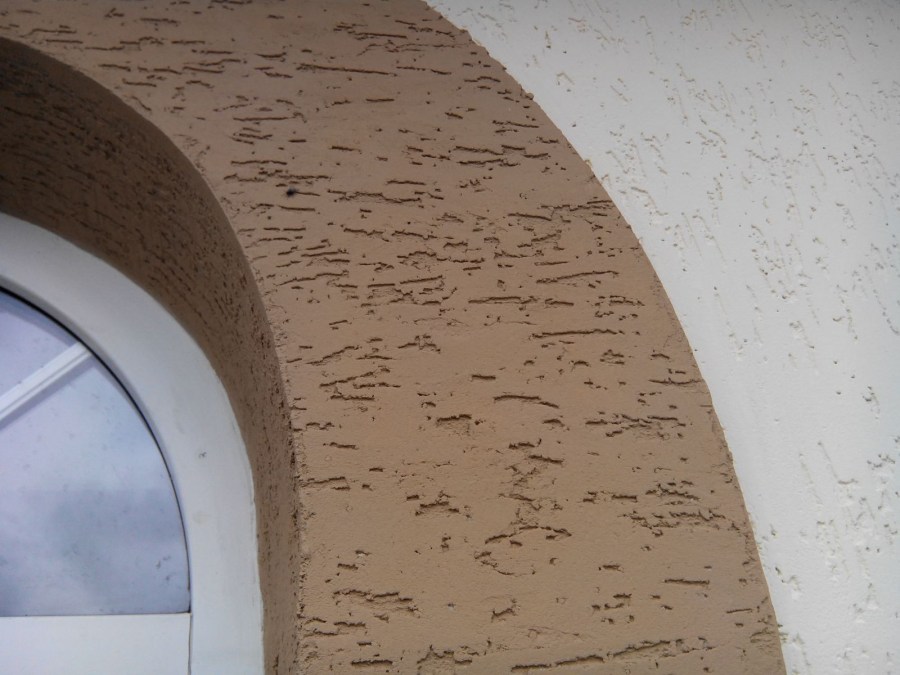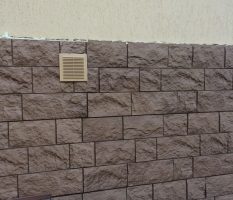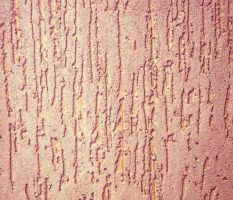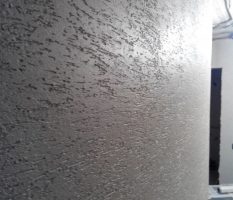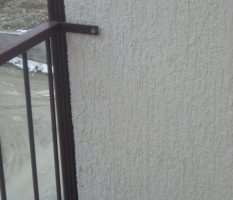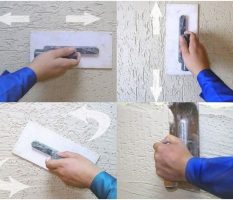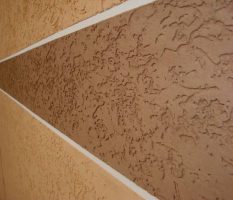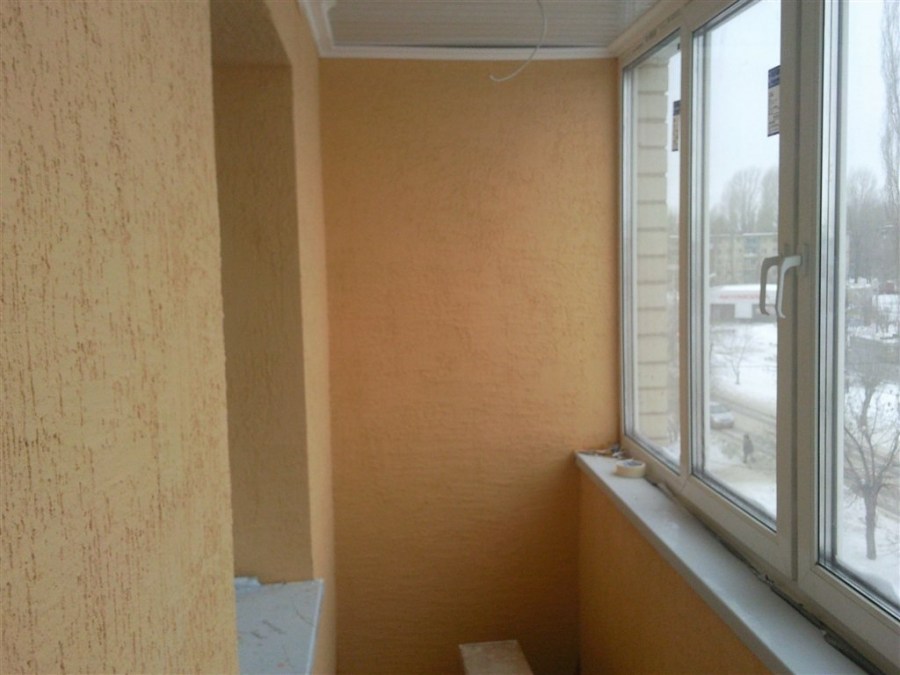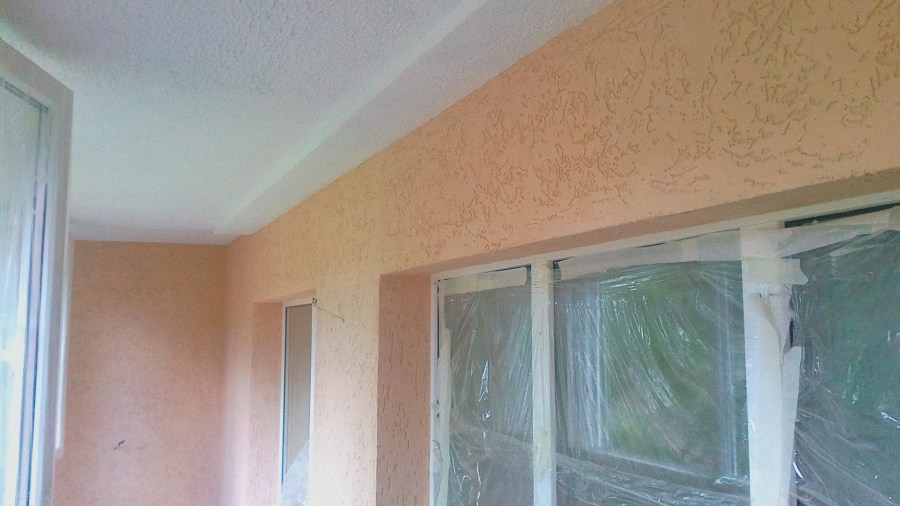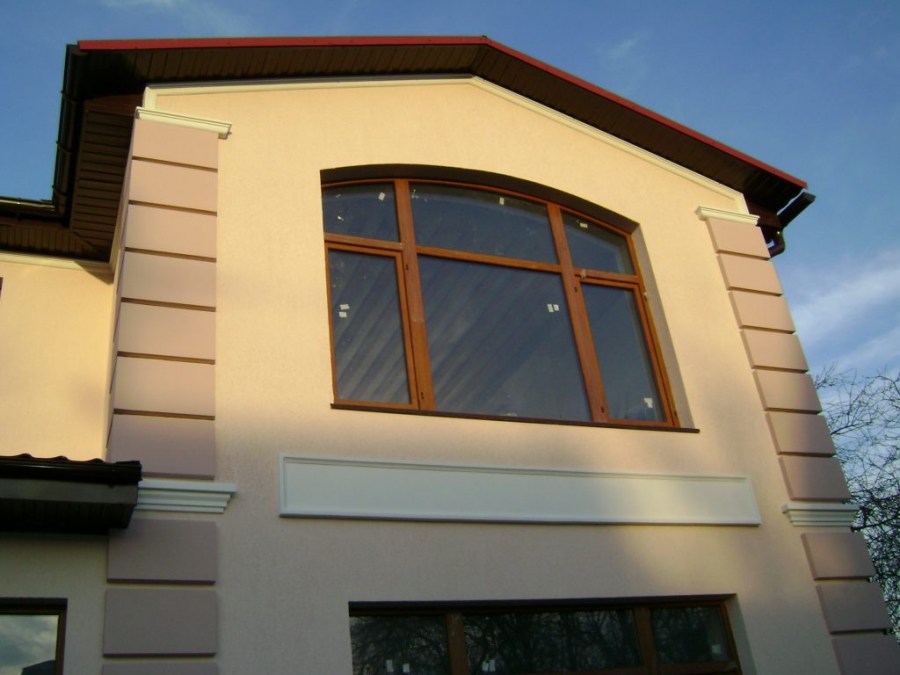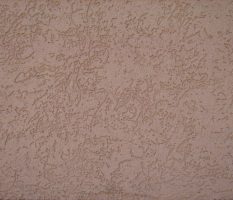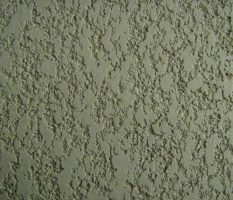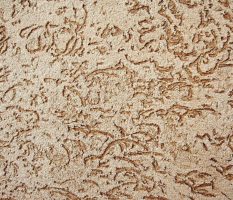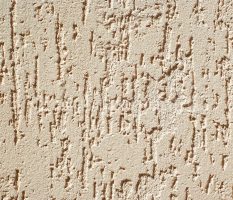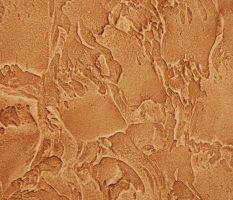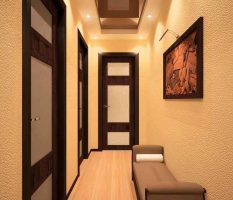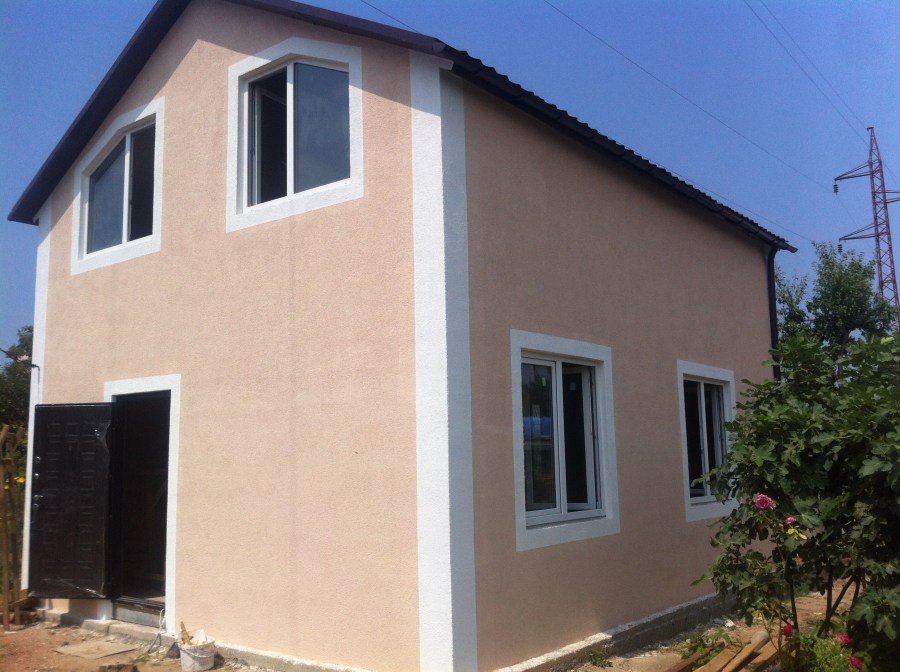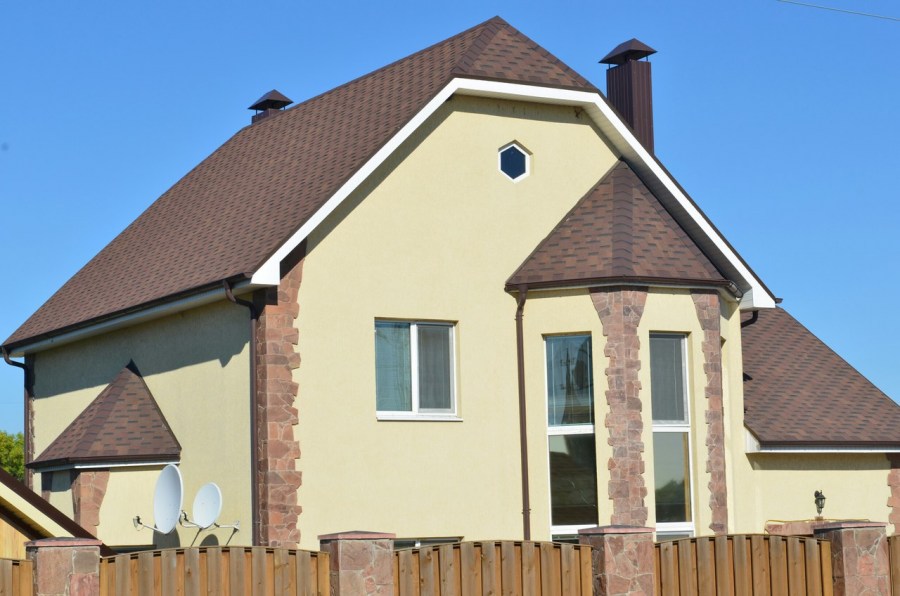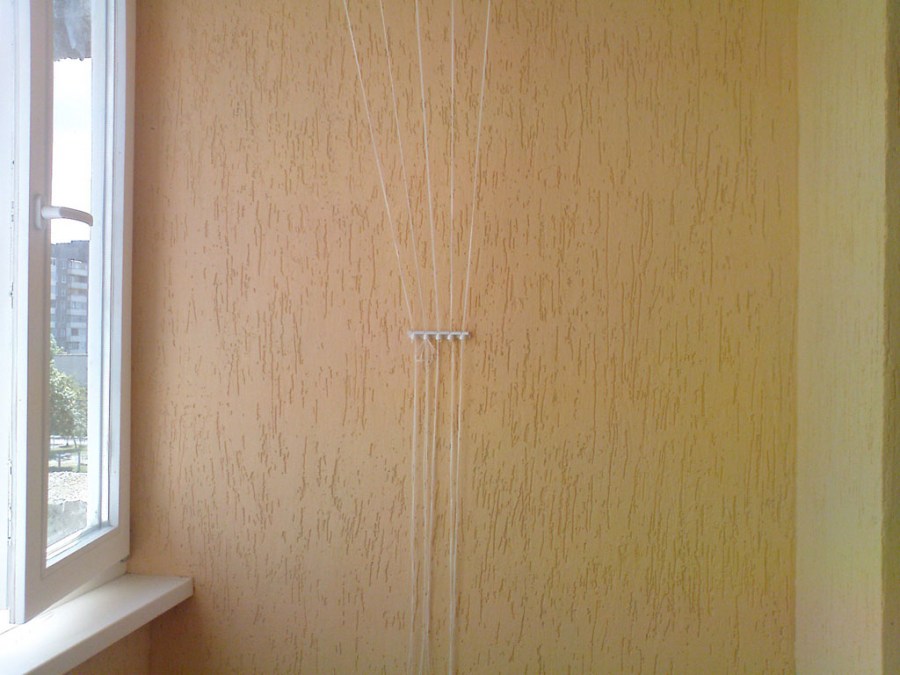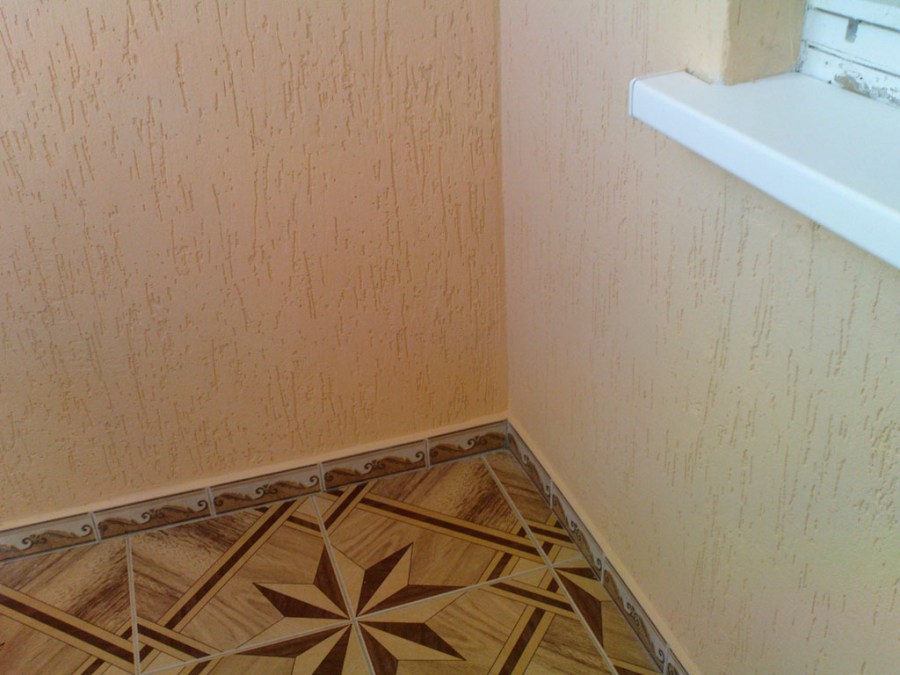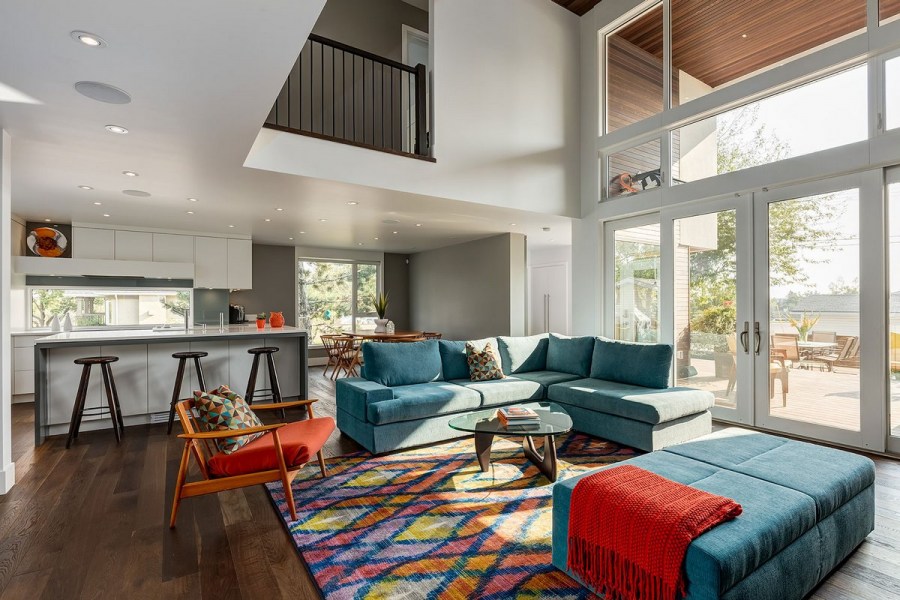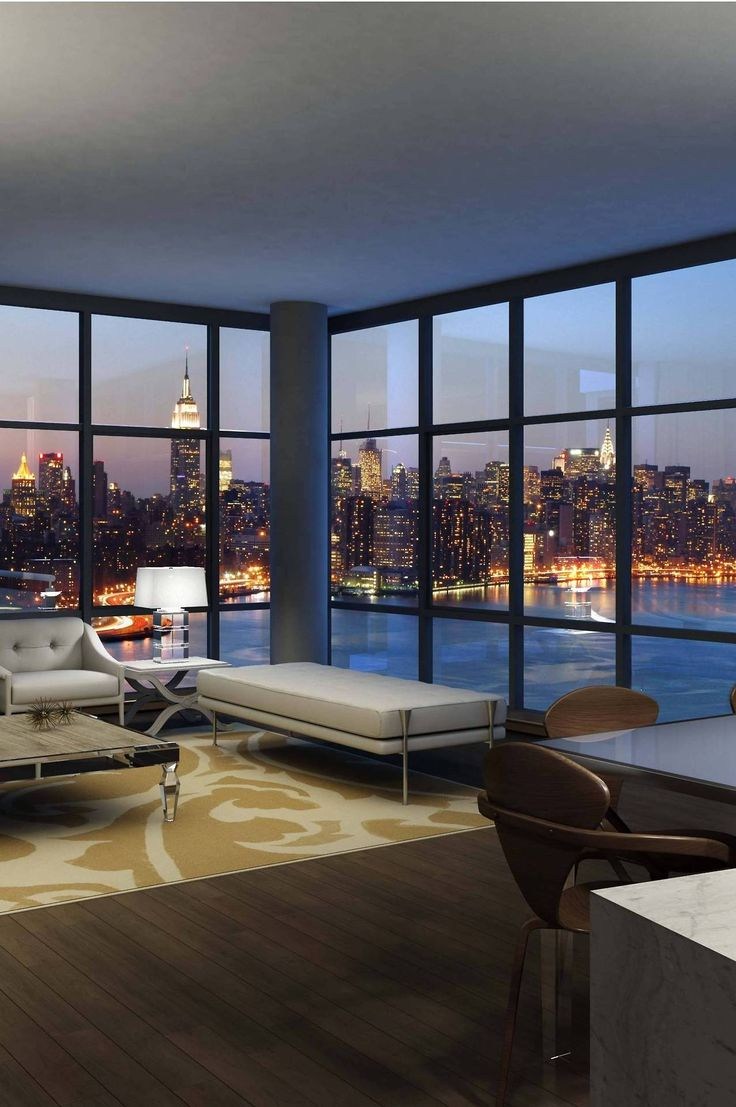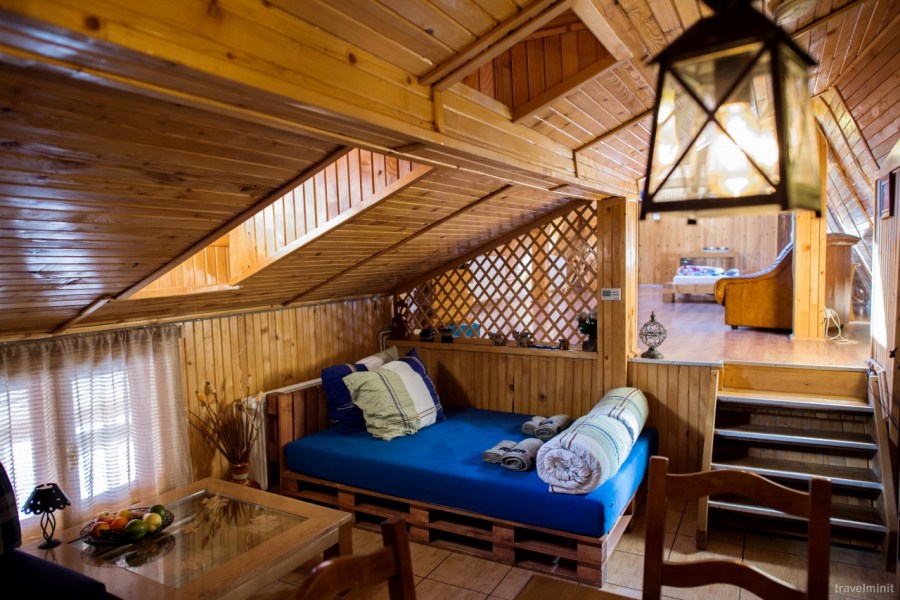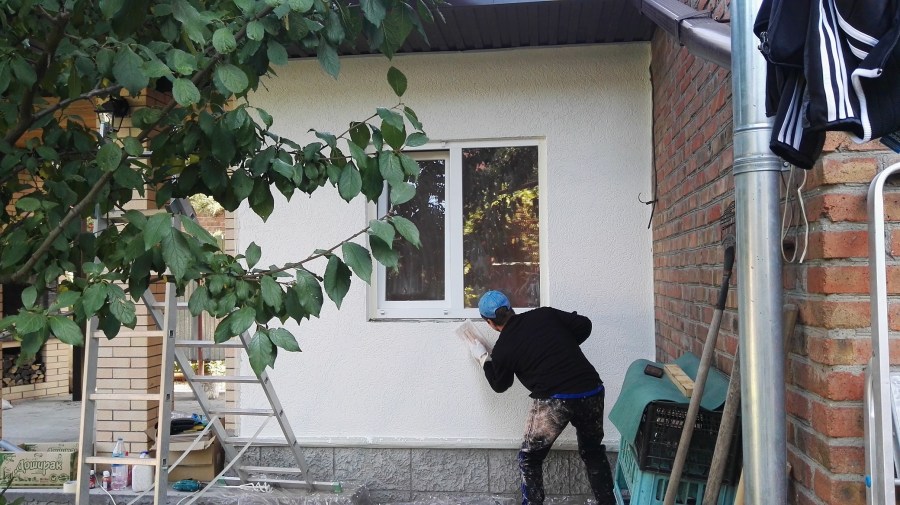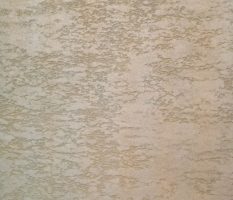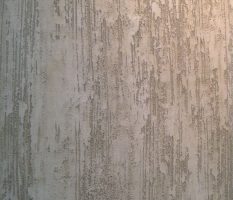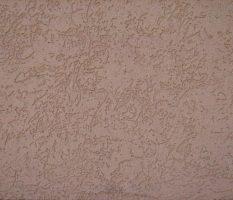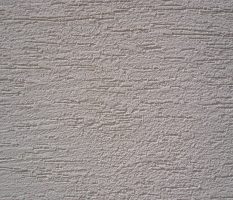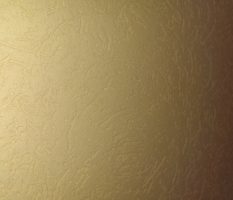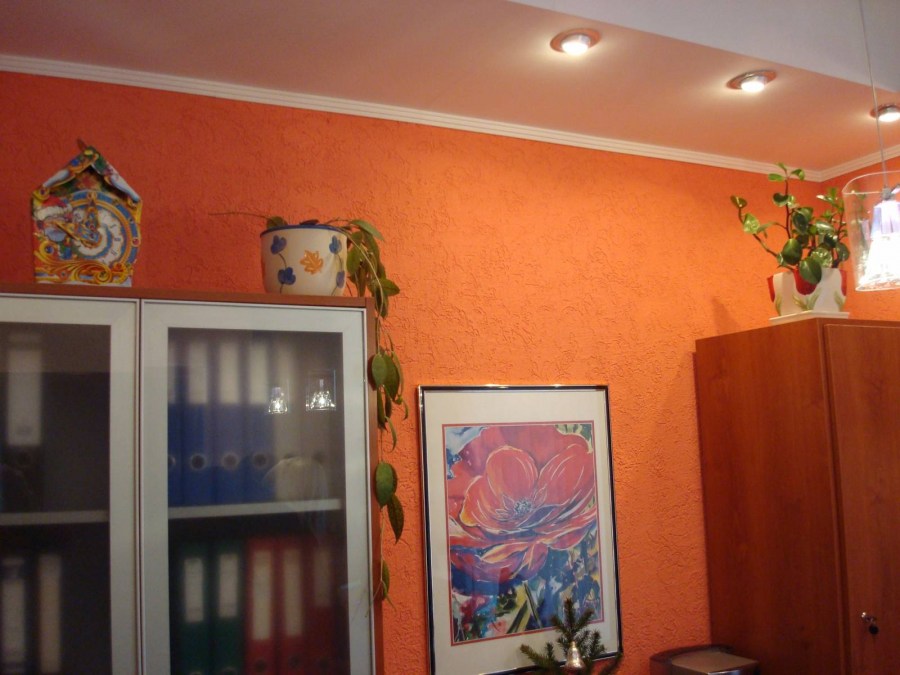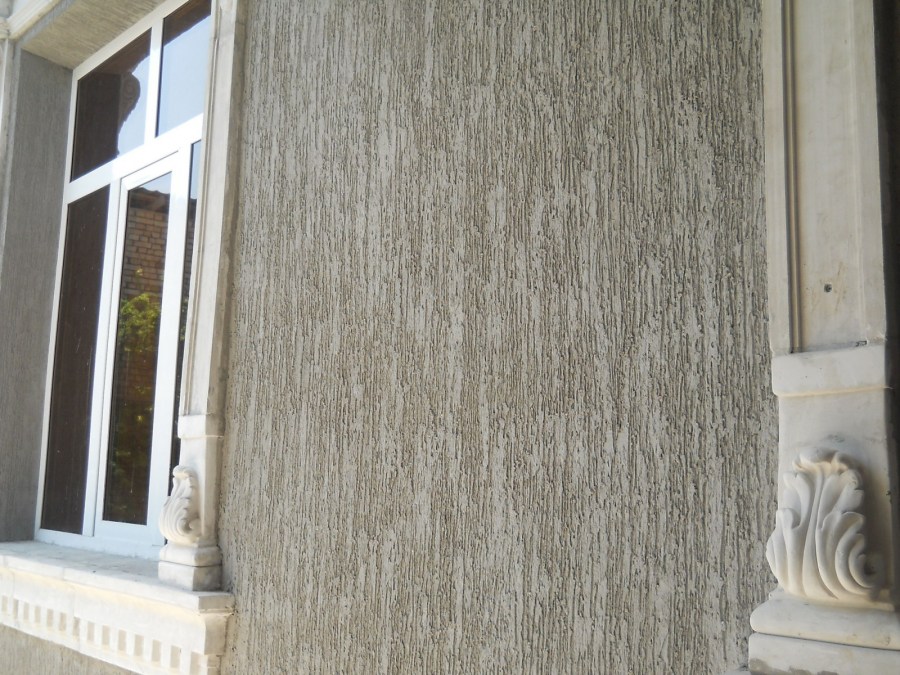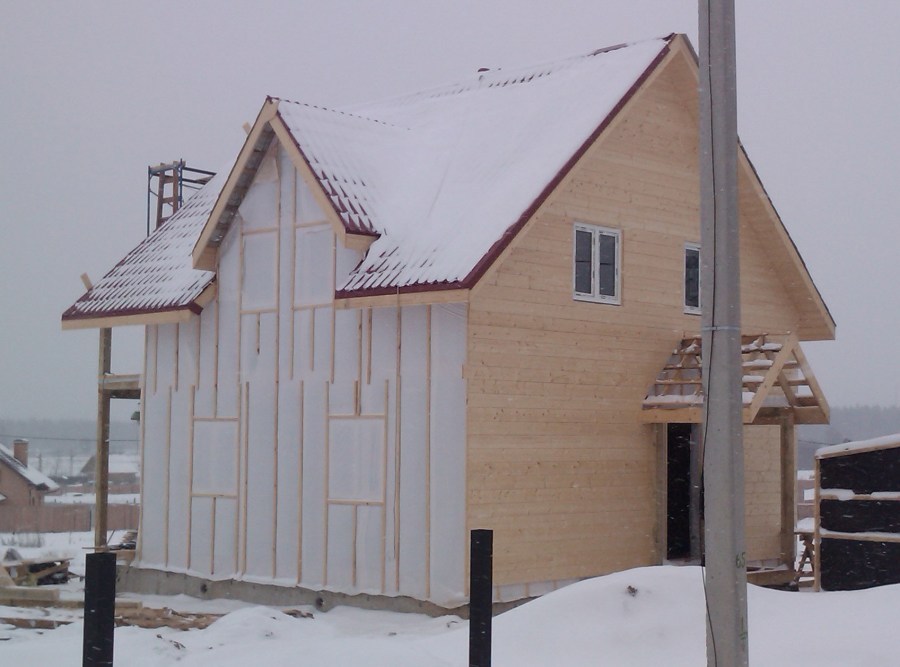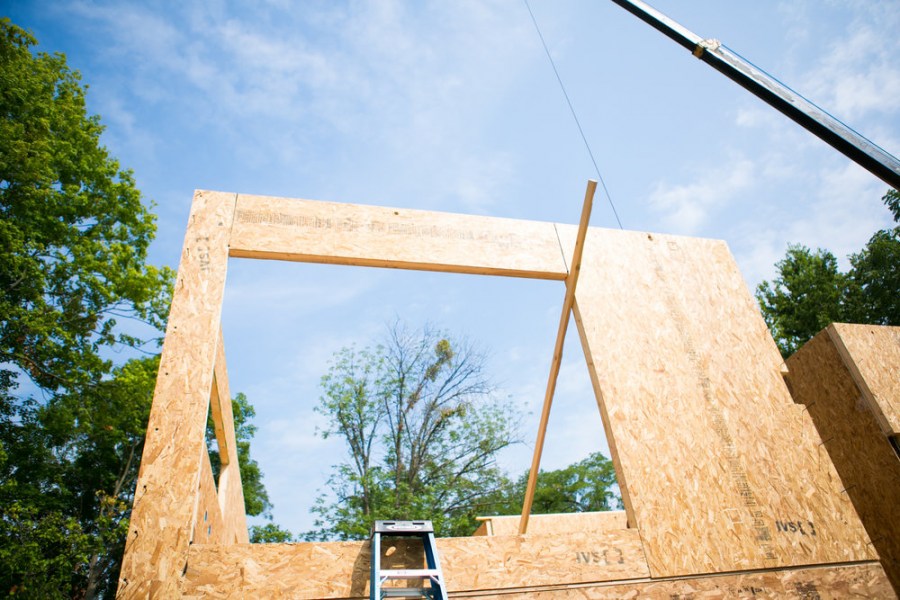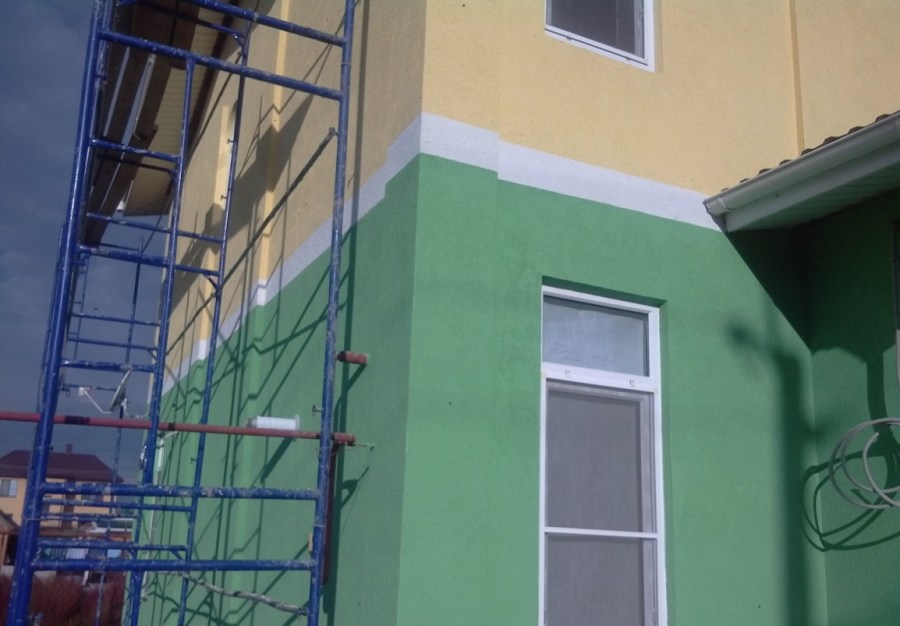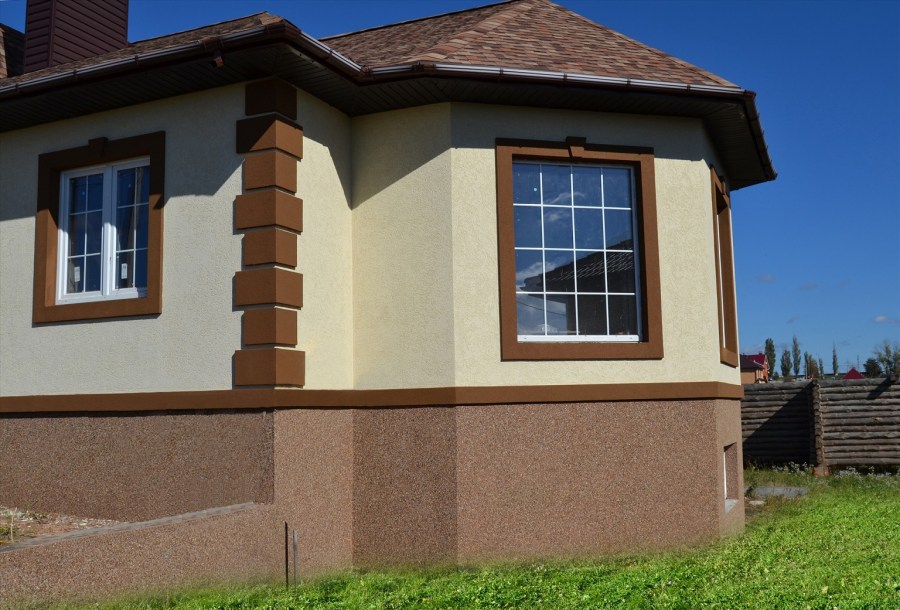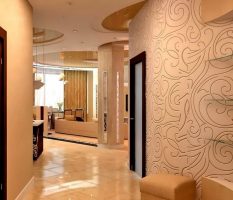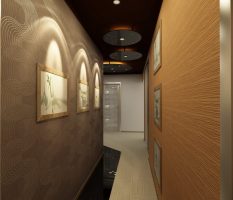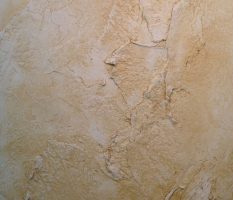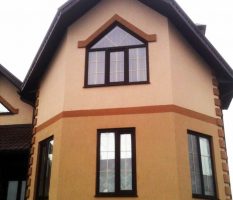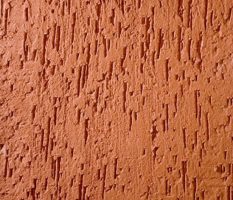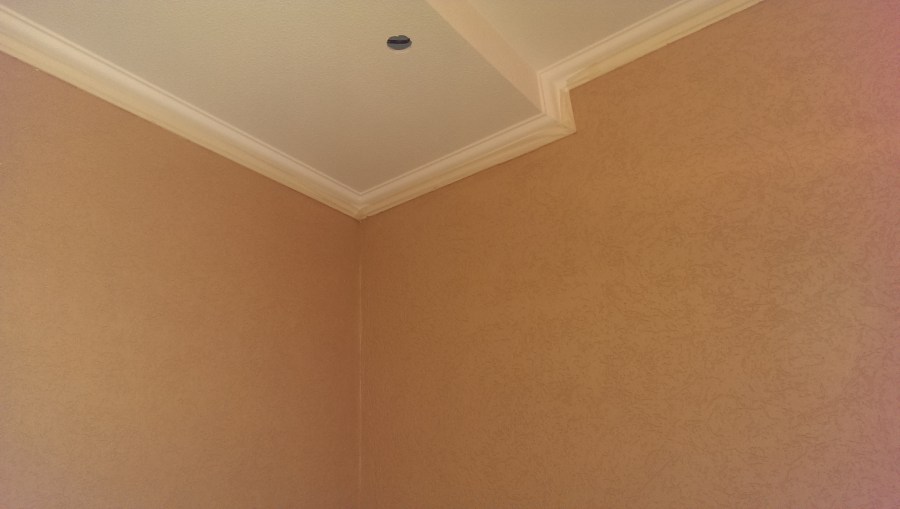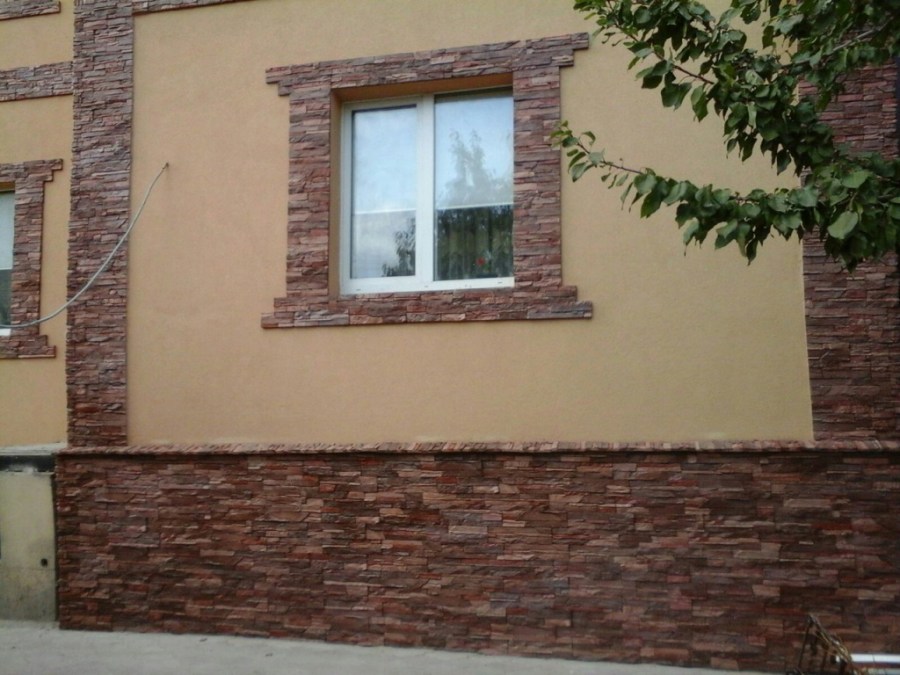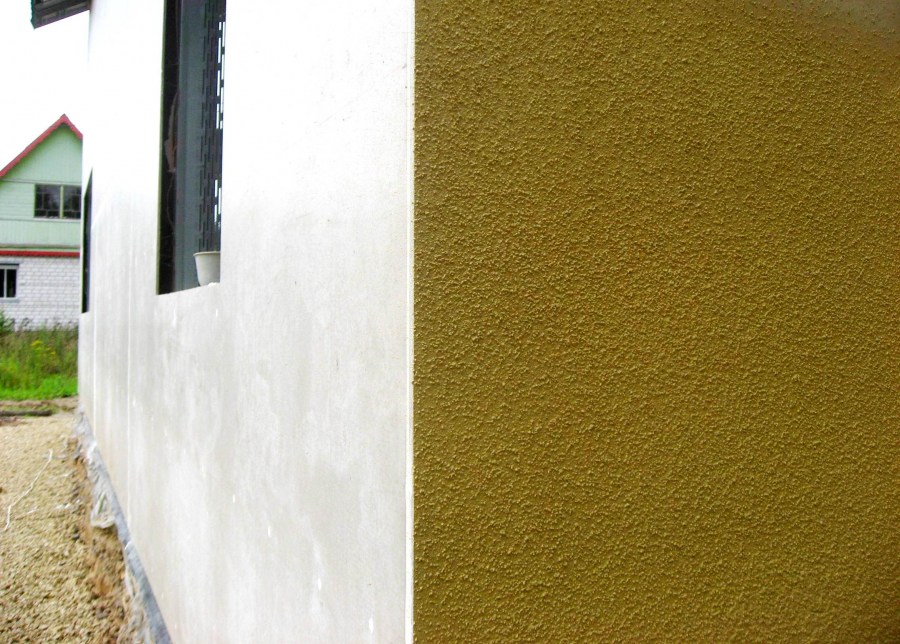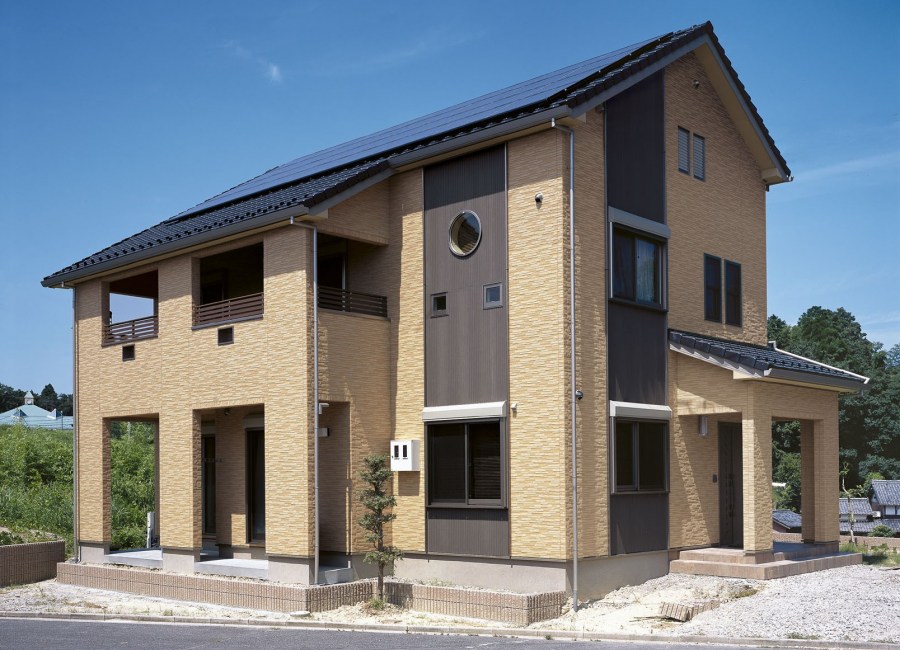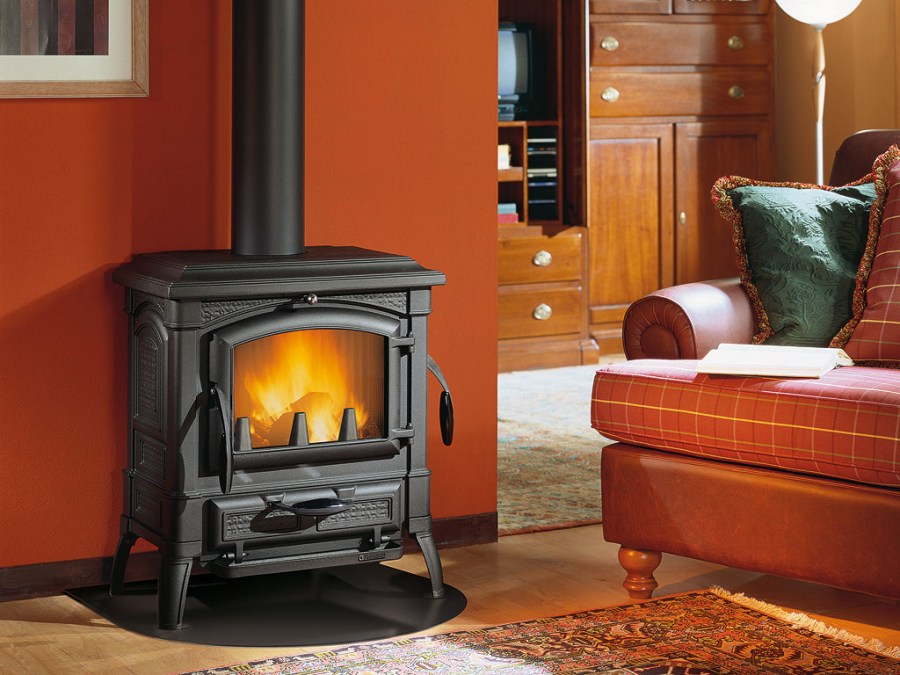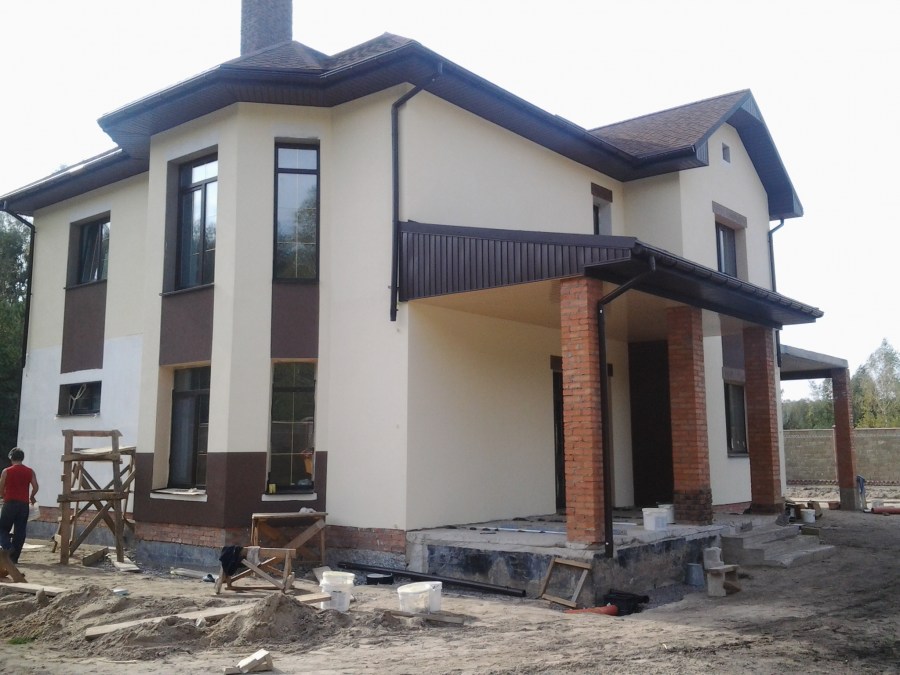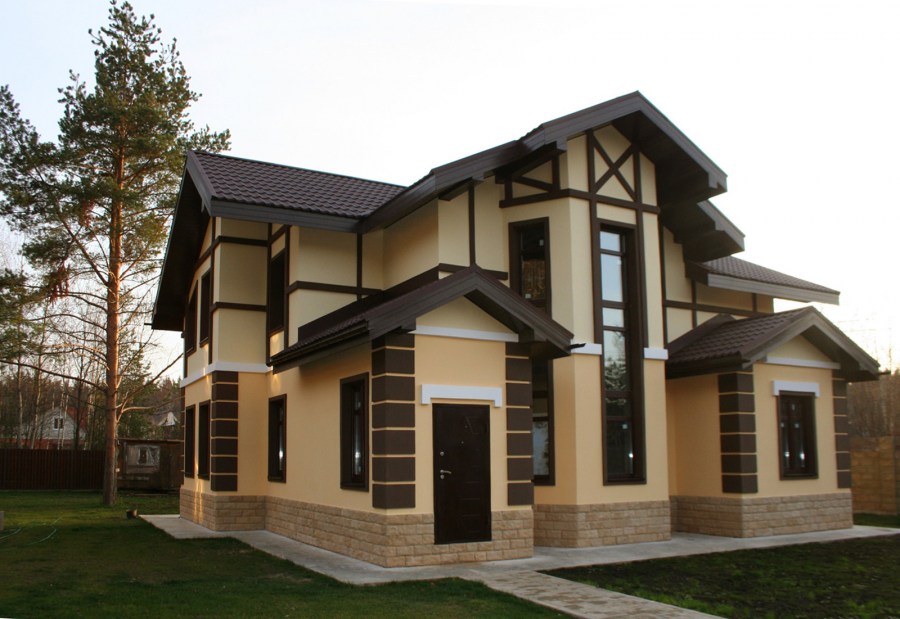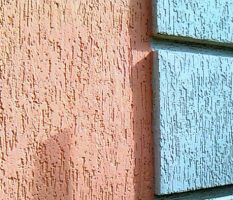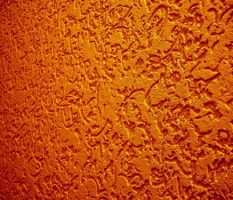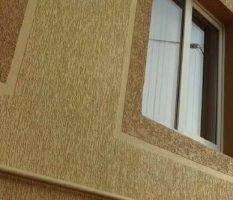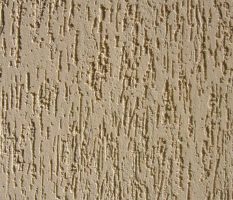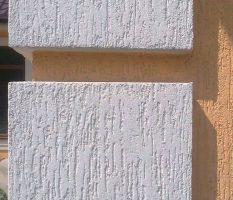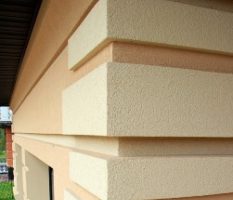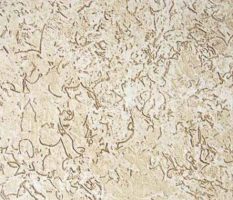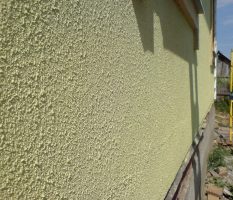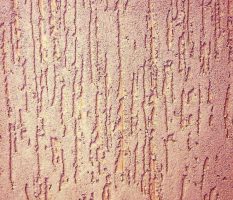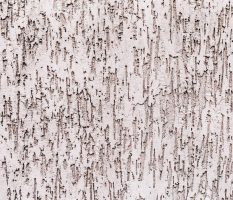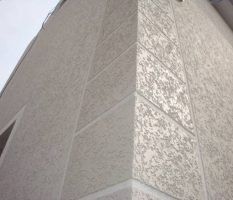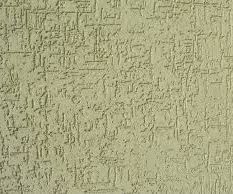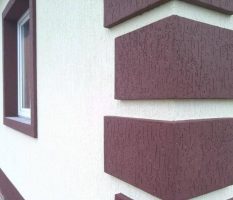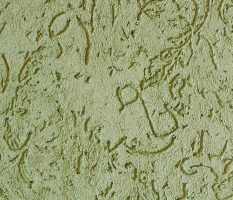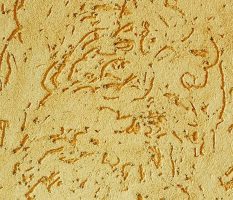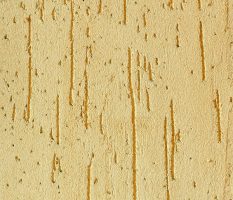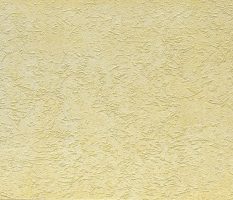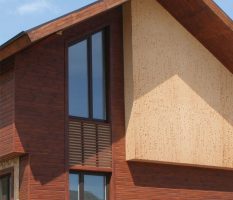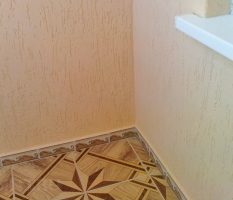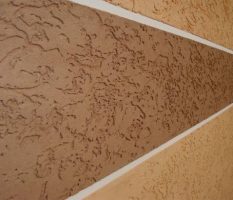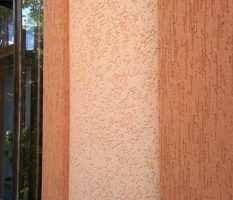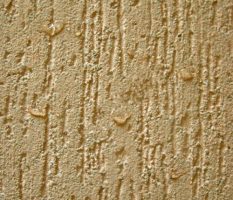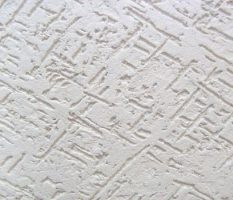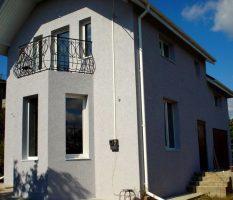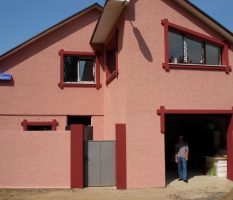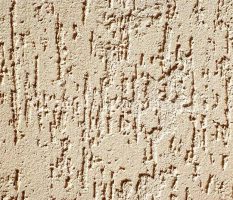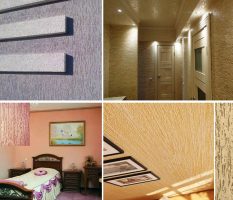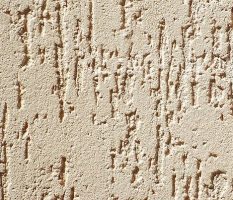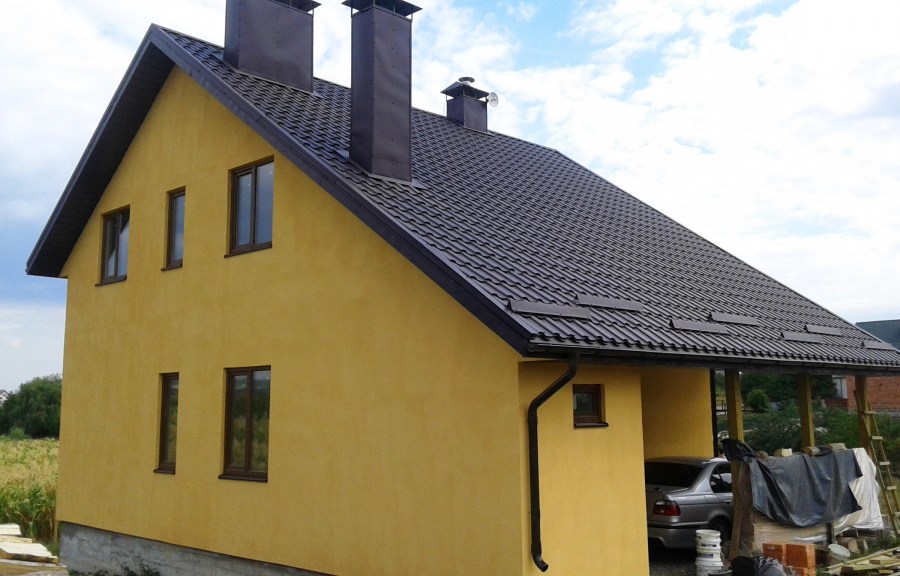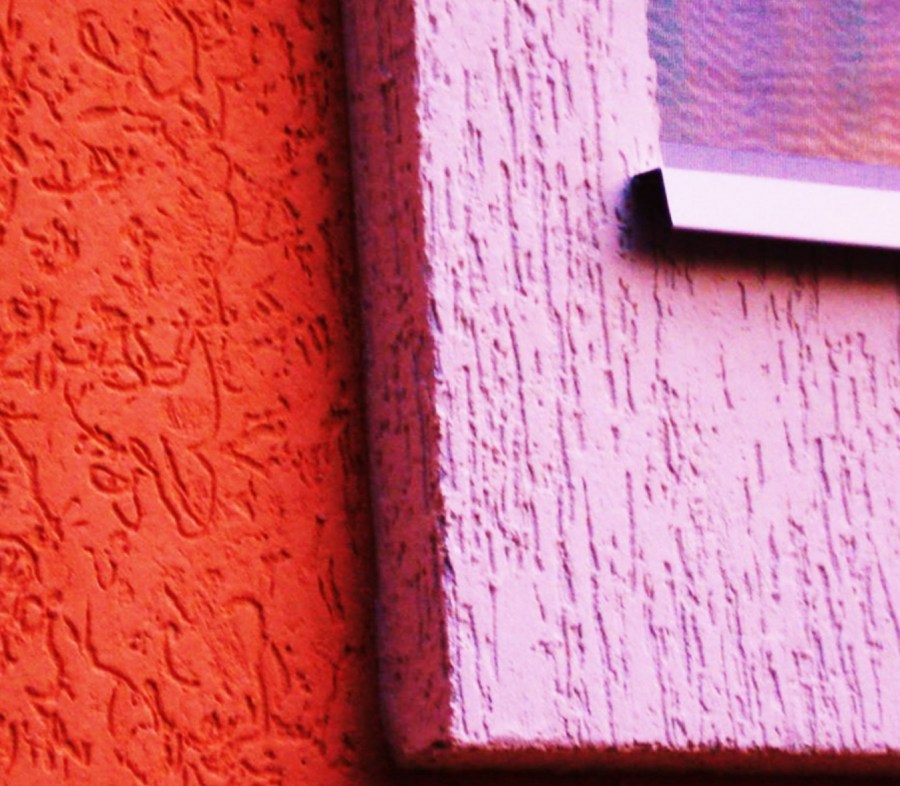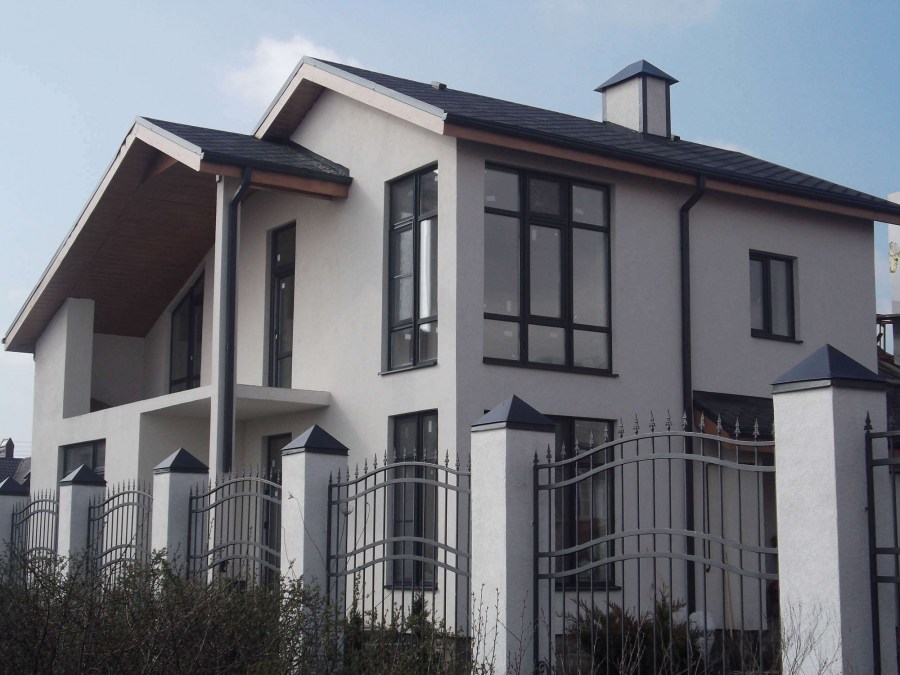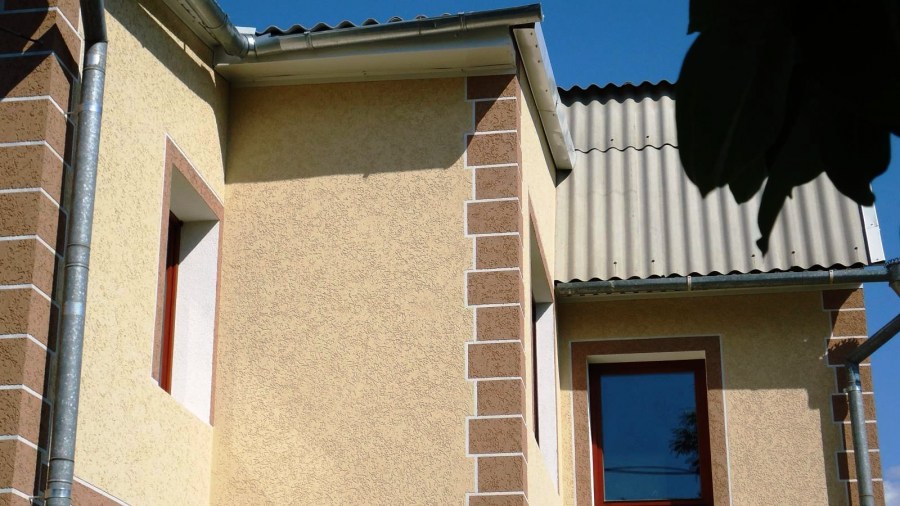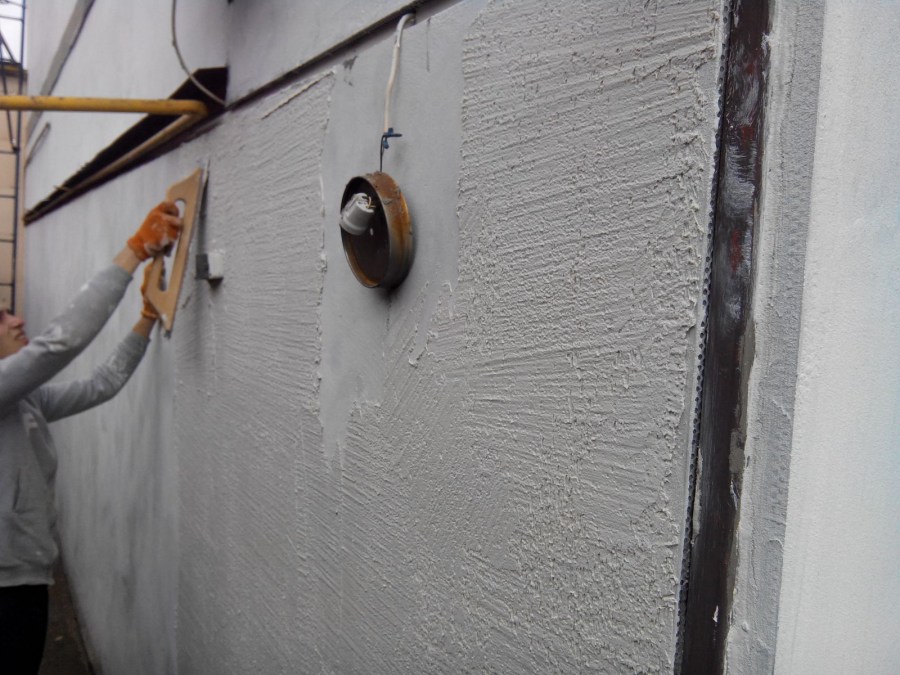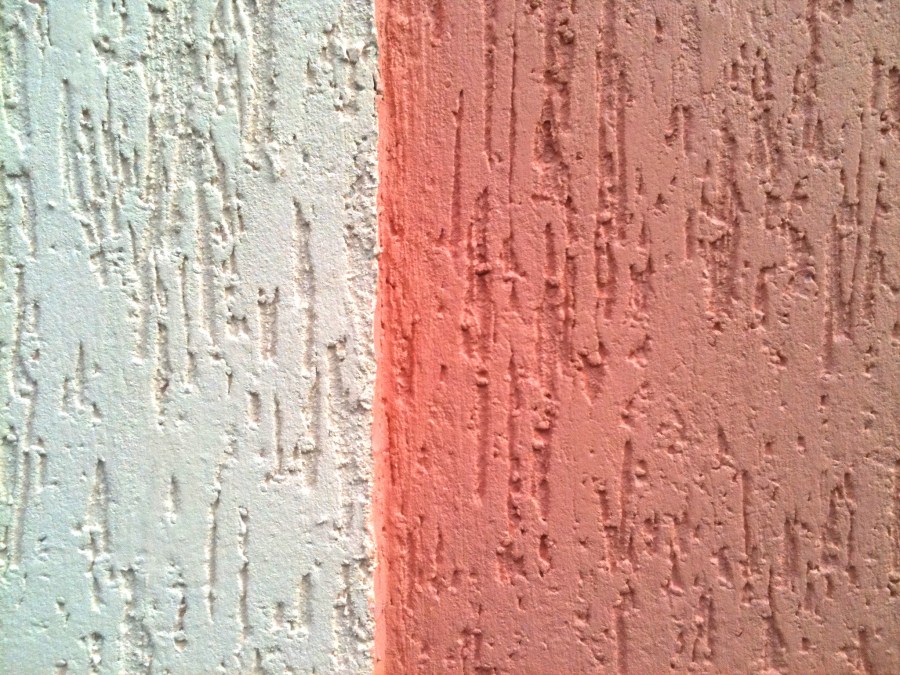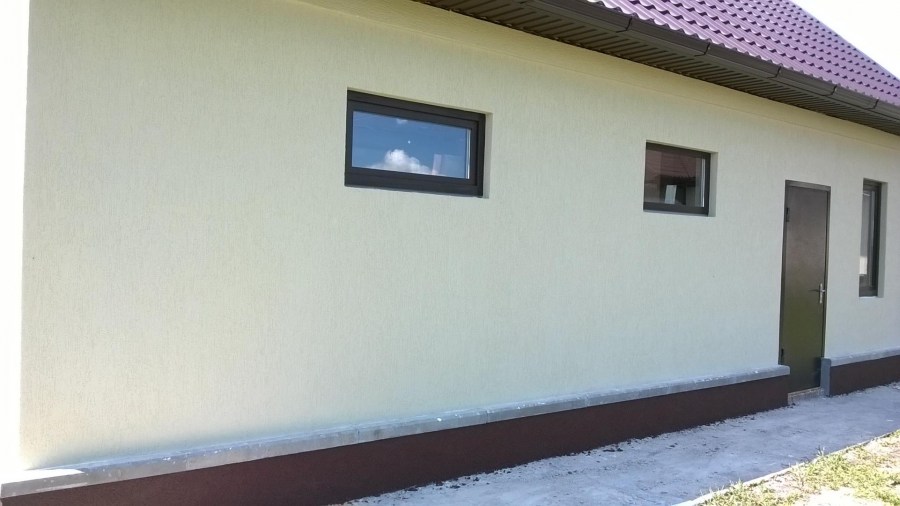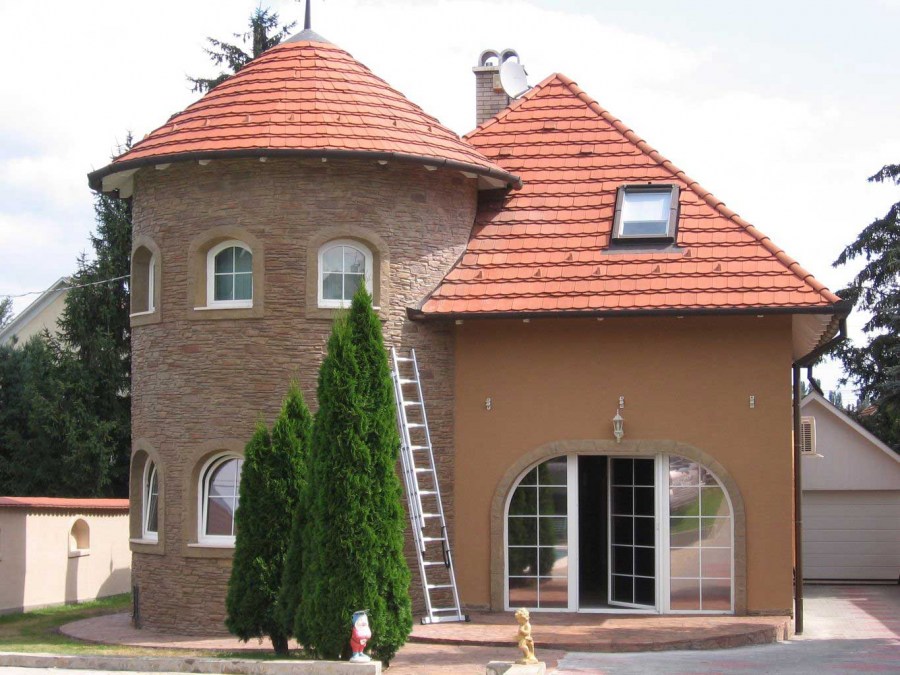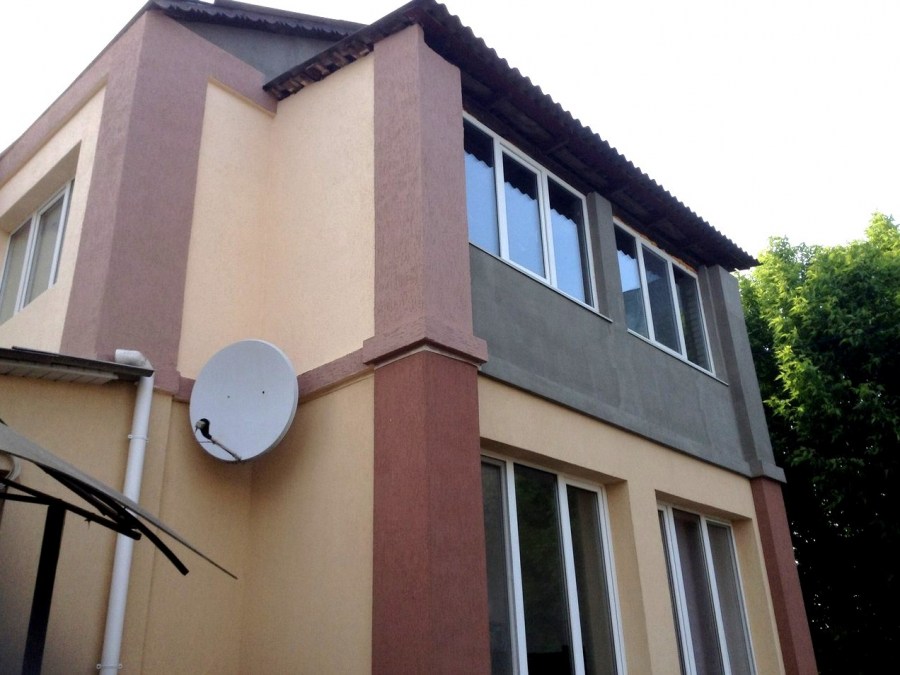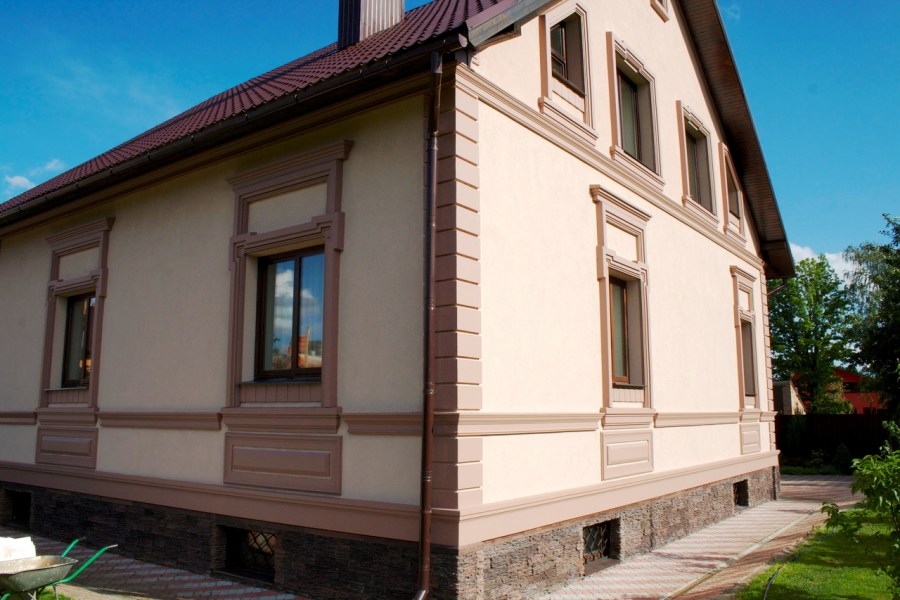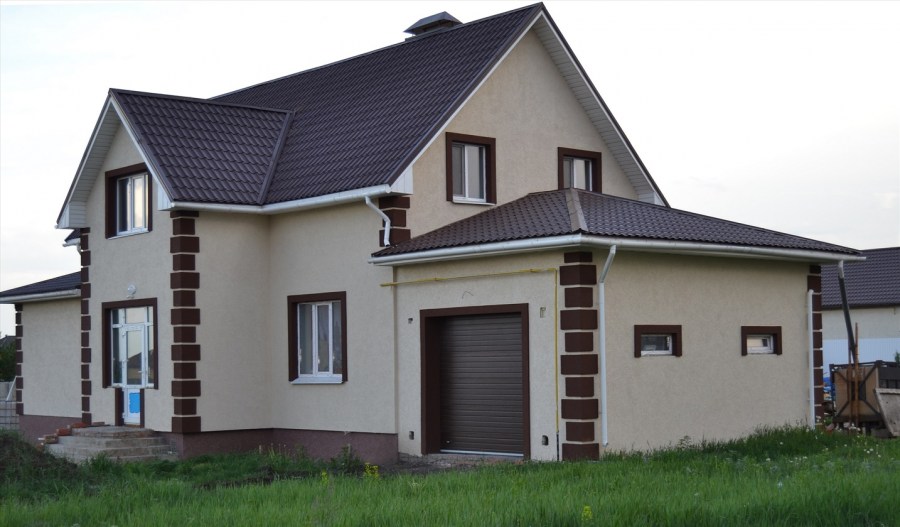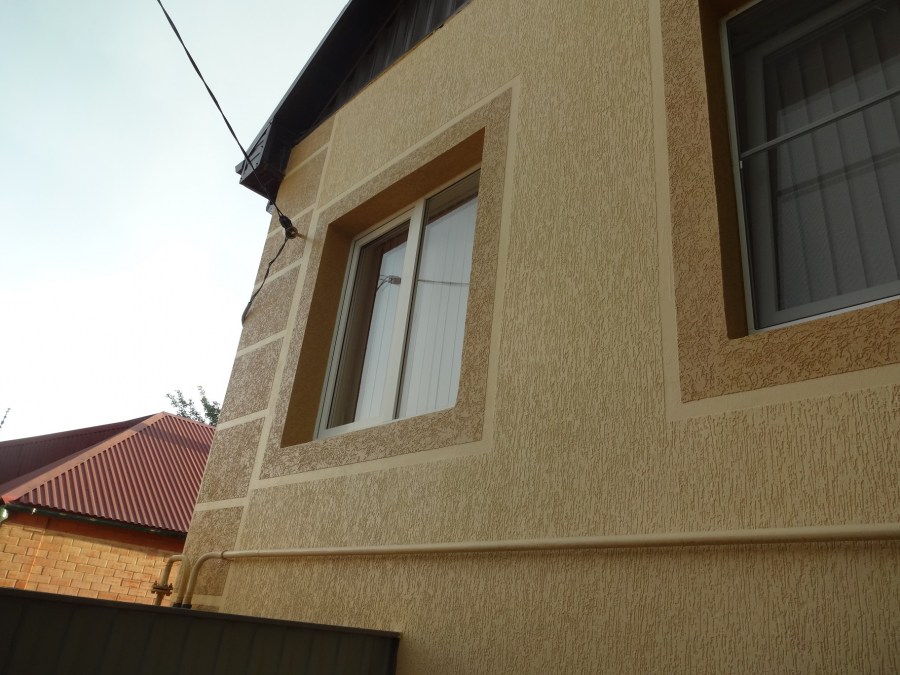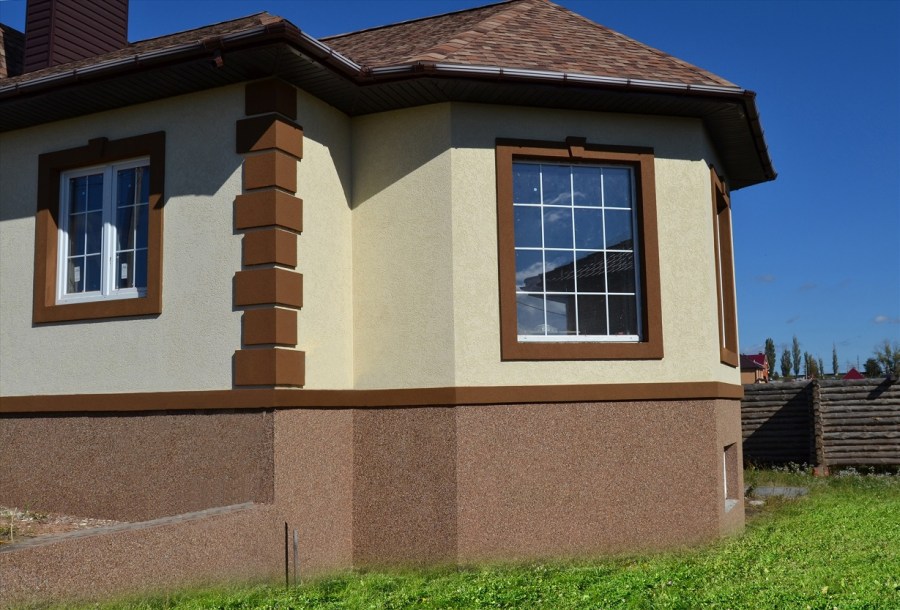Decorative bark beetle plaster - 110 photos of a beautiful facade decoration. DIY application technology
Decorative bark beetle plaster is recognized as one of the most unusual varieties of wall decoration. The presented material is outwardly similar to a thinned tree, it is used for processing walls from the inside and outside. The presence of various irregularities makes the material more colorful and contributes to the formation of comfort and tranquility in the home.
Varieties of decorative bark beetle plaster
There are two varieties of the plaster presented:
- acrylic;
- on a gypsum basis.
Acrylic products are sold in prepared form, and the material containing gypsum is a mixture of dry components.
If we consider the presented products, in general, then it is a composite type plaster, which includes small stones, granules.
All manufacturers of plaster have their own recipe for its creation, but in the bark beetle plaster in the form of small granules stands mineral powder or marble. Given the size of the crumbs, the size of small granules can vary from 0.1 to 3.5 millimeters.
Main characteristics
Decorative plaster for walls is distinguished by the presence of such characteristics:
A mineral filler and elements made of polymers act as a substitute for sand, which makes the prepared mixture easier, and this makes it possible to prevent excessive load on the building.
Stucco bark beetle for the facade is a material that is safe for the environment, since there are no harmful components in its composition.
It does not deform during extreme cold or heat (it withstands temperature fluctuations from -55 ° C to + 60 ° C), is resistant to the influence of the sun, and in extreme heat it does not release components that are toxic to the human body.
The material is characterized by a high service life, since it is not susceptible to mold, tolerates processing with weak chemical solutions, the presented products can be cleaned with water without fear that the material will deform under heavy rain.
Stucco calmly tolerates mechanical impact, it can be treated with a sponge or vacuum cleaner, tolerates gentle shock.
As you can see on the photo of decorative bark beetle plaster, its natural color is white, but when mixed with dyes, you can get any shade.
It is widespread and affordable - plaster can be purchased at any hardware store at a very affordable price.
Material selection
Before proceeding with the processing of the walls, it is required to select the material that will be used in the future. There are a large number of manufacturers of the presented material, but Ceresit decorative plaster is considered the highest quality.
If you opted for this manufacturer, then you need to carefully select the grain size and type of product. With the help of granularity, it is determined what size the grooves formed during the creation of the texture will be.
Choosing the grain size of the material, it is necessary to take into account the fact that the consumption of bark beetle plaster is directly related to the size of the grains. If products with a granule size of 3.5 mm have been selected, the waste of the plaster is increased compared to the use of granules with a size of 2.5 millimeters.
It will be best to immediately buy 25 kg of decorative bark beetle plaster, it will be much more convenient, because you do not have to run to the store all the time and buy material.
After that, you need to determine the type of product: dry mix or ready to use. The finished product is much more convenient to start using, but its cost is higher. It contains synthetic fillers in the form of acrylic and silicone. Nevertheless, if the creation of the dry mixture was carried out taking into account all the technologies, then the quality of the plaster will not be inferior to the finished material.
Preparation for application
Before applying decorative bark beetle plaster on the wall, it is necessary to prepare the mixture and the walls on which the material will be applied.
To work with decorative plaster, you will need the following tools:
- bucket;
- several spatulas;
- plastic grater;
- drill, a prerequisite is the presence of a nozzle "mixer";
- plaster.
To prepare the walls for plaster treatment, they need to be cleaned of dust particles, grease, oils, dirt. After that, the wall is leveled, all the holes and cracks present on it are processed with putty. The wall should be completely flat, if there are bumps, then their size should not exceed the grain size of the plaster.
Before applying the plaster to the wall, apply the primer, which must have the same color as the plaster. The primer dries in 2-4 hours, after this time, you can proceed to the use of plaster.
If the mixture is a dry mixture, then it must be diluted, following this plan:
- plaster is poured into water;
- water temperature should be in the range from + 15C to + 20C;
- the resulting mixture is mixed with a mixer or drill with a special nozzle;
- after obtaining the desired consistency, the mixture should be left for several minutes, and then mix again.
After diluting the plaster, you need to use it immediately, because to “renew” the mixture by adding water, it will not work.
Features of applying plaster
The following technology for applying decorative plaster is distinguished:
A small amount of material is applied to the wall and spreads with a thin even layer.
After thickening the plaster (about half an hour), it is required with light sliding movements to walk along the surface of the wall using a grater. This is required to align the layer and create a picture. The main thing is to perform soft movements without pressing a grater.
When treating a surface with a large area, several people will be required, one person must apply the plaster, and the other handle it with a grater.
It is advisable to apply the plaster without interruptions, but if there is a need for rest, then at the border of the applied plaster only it is recommended to glue the tape, this will prevent the material from drying out. Given the brand, the drying of the submitted material takes from 1 to 5 days.
If the plaster was applied according to the technology, then the surface of the walls will delight you with the absence of joints and “glossiness”. The main thing to remember is that following the technology will protect you from cracking several weeks after surface treatment.
Photo of decorative stucco bark beetle
Pear: planting, care, vaccination and pruning with your own hands (100 photos + instructions)
Beautiful houses - exclusive modern design options (135 photos of new products)
Gasoline motor pump: 60 photos of the most effective water intake devices
Join the discussion:
